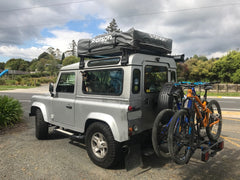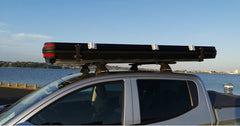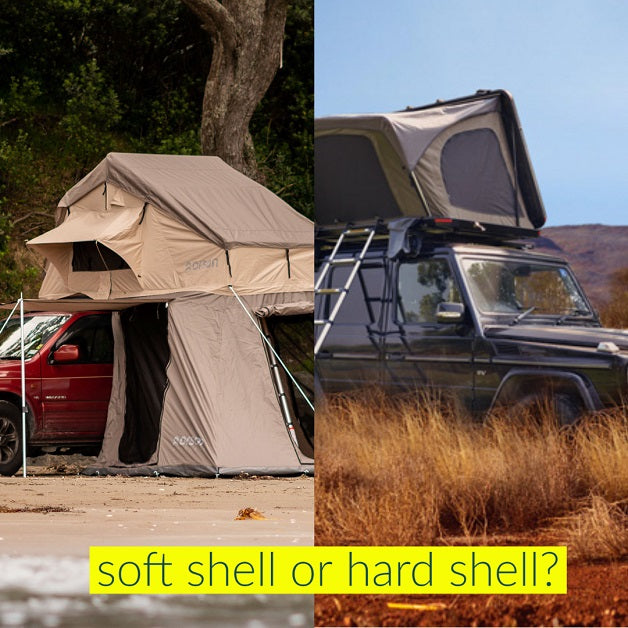You see more and more people out and about with roof top tents on the road and at campsites. Comfortable, easy to use and the freedom they offer make roof top tents a winner for quick weekends away or long road trips.
There are two types of roof top tents - soft shell tents and hard shell tents. What are soft shell tents and hard shell roof top tents? What are the differences? Which is better for you? Check out the pros and cons of each.


Soft Shell roof top tents
More typically seen around NZ – something like our AX2 . Bi-fold roof tents are most popular with a canvas or polyester tent packed in between two hard bases to protect the tent inside when folded and then enclosed by a PVC cover. When unfolded the floor of the tent is doubled in size and extends out beyond the roof of your vehicle and supported by a ladder which also provides access.
Pros
- Generally more affordable (cheaper) than hard shells
- Larger floor size – the folded tent doubles the floor area when opened up
- Smaller roof area when packed away ready for travel
- The opened floor overhang off the side of you vehicle offers some shade and shelter from the sun
- Annex option – a large room with living, sleeping options or storage options under the main tent
Cons
- Takes longer to set up and pack away with manual assemble and more effort required
- Higher packed profile on the roof so higher centre of gravity and change to handling, less fuel efficiency
- Noisier when driving with greater wind resistance
- When setting up will need greater area


Hard Shell roof top tents
Hard shell tents have hard rigid top and bottom pieces (usually aluminum or increasingly ABS plastic preferred over fiberglass) that enclose the tent walls, full mattress, bedding, etc. between them when the tent is closed to protect everything inside. The hard lid forms roof when raised with full sized mattress sitting in bottom shell. Set up is usually aided by automated or gas strut mechanisms.
The end opening wedge like the Wild Land Bush Cruiser is a popular design and the side opening DC2 offers a more uniform height and interior and a bigger door for easier access.
Pros
- EASY setup and pack down. Gas strut or remote opening systems for super quick, no fuss setup and pack down – much faster and easier than soft shell tents
- Often have a lower more streamlined and aerodynamic profile, for quiet performance and better fuel usage
- Less height may be an advantage for some users with garages etc
- Lower centre of gravity for better road handling
- Smaller ground area required for use – tent does not extend beyond your vehicle’s footprint
- Options for carrying gear on top of the tent like surfboards, fishing rods etc
- Lots of accessories like awnings, annexes, tarps, thermal liners etc coming through
Cons
- Smaller sleeping size inside compared to soft shell tents
- Generally more expensive than soft shells
Verdict?
Everyone has their own priorities and requirements. Generally soft shell tents offer more room so may be better for groups of 3 or more, or those with more gear or staying on longer stops. Hard shell tents are super easy to use and perfect for those always on the move.
Still not sure or want to know more? Contact us at Intents Outdoors if you have a question about roof tents or which style would be better for you.

